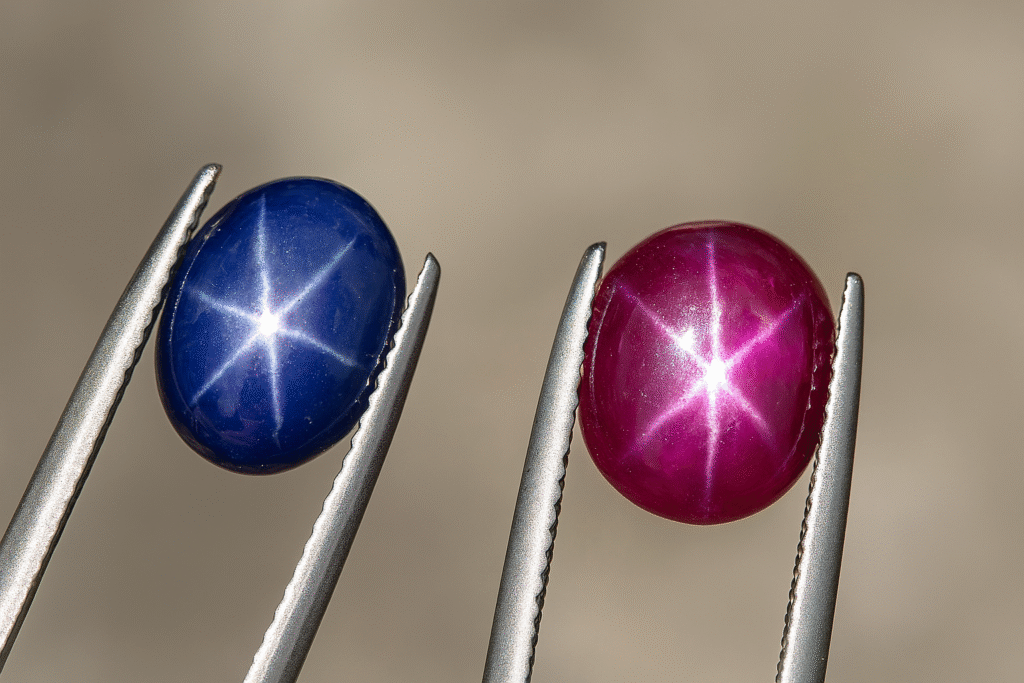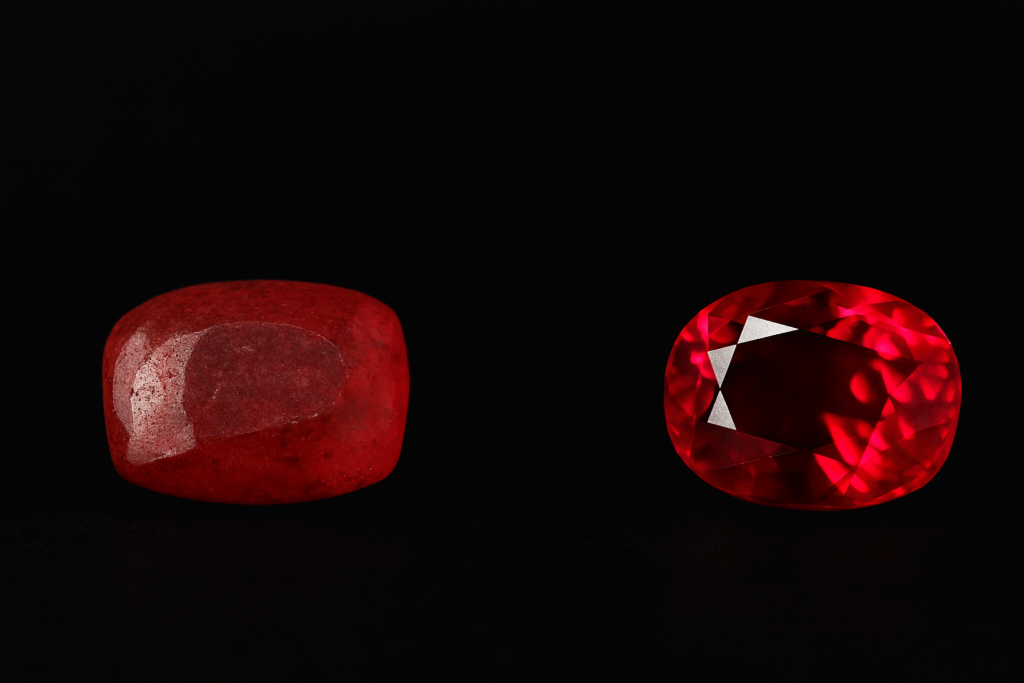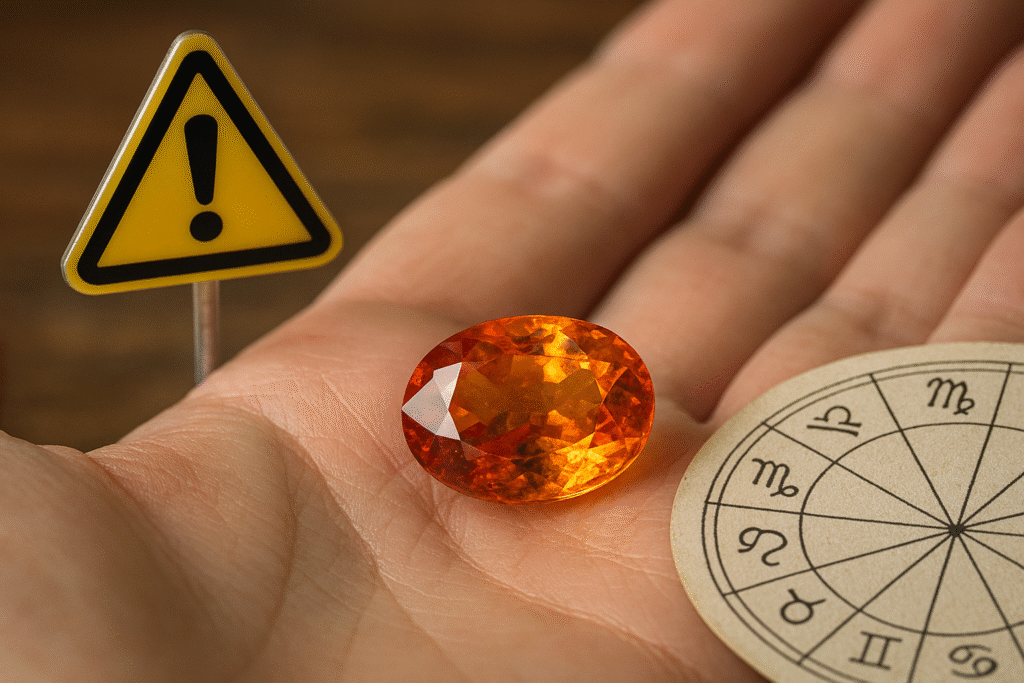Quick Answer
A quality star sapphire or ruby is defined by its sharp, centered, six-rayed star — not just by body color. This guide explains how to judge these gems using insights from my 40 years in the trade.
The Story Behind Star Stones
In the 1990s, a young couple showed me what they thought was a magnificent star ruby from Jaipur. The body color looked rich, but the star was faint and off-center. They had overpaid for a weak stone. That day, they learned the truth: in a quality star sapphire or ruby, the star matters more than size or color.
Why the Star Defines a Quality Star Sapphire or Ruby
- The value of a quality star sapphire or ruby depends on the sharpness and centering of the star.
- A fine gem shows six bright, straight rays that meet in the middle.
- Weak or misplaced stars can lower value by 40–60%.
- Studies show 70% of tourist-market star stones are weak or uneven.
👉 See my guide on buying sapphires safely for more tips.
👉 GIA also explains the properties of star sapphire.
How to Judge a Quality Star Sapphire or Ruby
- Hold it under a single light source.
- Tilt slightly: the star should glide smoothly across the surface.
- Ask yourself: is this truly a quality star sapphire or ruby, or just a colored stone with a weak star?
Case Studies: How a Quality Star Sapphire or Ruby Holds Value
- Bangkok (2003): A client chose a small sapphire with a sharp star. It later gained 30% auction value in five years.
- Sri Lanka (2010): Dealers paid 50–80% more for sharp stars, even in lighter-colored stones.
👉 Read more on gemstone light secrets.
Pro Tips for Choosing a Quality Star Sapphire or Ruby
“The key is: in a quality star sapphire or ruby, the star always outweighs the color.”
- Don’t be swayed by size alone.
- Always check under direct light.
- A smaller but sharp star stone holds value better than a large blurry one.
👉 You may also like my post on why certification matters in gem buying.
👉 For lab info, check SSEF Gem Lab.
FAQs on Star Sapphires and Rubies
Q1. Are star sapphires rare?
Yes. Fewer than 1 in 100 sapphires show a visible star.
Q2. Do synthetic star stones exist?
Yes. Flame-fusion sapphires often show overly perfect stars. Always demand certification.
Q3. Which matters more: star or color?
Star sharpness. A lighter sapphire with a sharp star is more valuable than a dark stone with a blurry star.
Q4. How do I avoid fakes?
Only buy with certification from GII, GIA, or SSEF.
This comprehensive global cuisine FAQ covers everything about Asian and Western food and drinks. Whether you’re exploring international cooking techniques or discovering new flavors, this global cuisine FAQ answers the most frequently asked questions about world food traditions, ingredients, and culinary practices from both Eastern and Western cultures.
Global Cuisine FAQ: Asian & Western Food & Drinks
Food reveals cultural contrasts in clear and delicious ways. From cooking methods to dining customs, Asian and Western cuisines showcase unique traditions while also offering fascinating overlaps. Below, you’ll find answers to the most common questions about these culinary worlds.
Understanding Core Differences in Cuisine
1. What distinguishes Asian and Western culinary traditions?
Asian meals often rely on rice or noodles as a foundation. Flavors usually come from soy sauce, ginger, garlic, and a wide variety of spices. Meanwhile, Western gastronomy emphasizes bread, potatoes, and pasta. Dairy plays a key role, with butter, cream, and cheese giving richness to many dishes. Herbs such as rosemary and thyme highlight European cooking. These contrasts create distinct dining habits and flavor profiles.
2. Are Asian dishes always spicy?
No, not at all. While cuisines from Thailand and parts of India feature bold use of chilies, not every dish follows this pattern. Japanese sushi, Chinese dim sum, and Korean bulgogi are mild examples. In fact, Asian cuisines range from fiery to delicate, showcasing a rich palette of flavor.
Western Breakfast Staples and Comfort Foods
1. What constitutes typical Western morning meals?
Western breakfasts often include eggs, bacon, and toast. Pancakes, waffles, and cereal are also popular choices. These hearty starts are usually enjoyed with coffee, tea, or juice, providing both energy and comfort.
2. What represents popular Western comfort foods?
Comfort foods in the West speak to nostalgia and indulgence. Creamy macaroni and cheese, pizza, and hearty casseroles are favorites. Similarly, burgers and fried chicken have wide appeal. Because they are warm, filling, and familiar, these dishes strongly connect to emotion.
Cultural Dining Practices
1. Do all Asian cultures employ chopsticks?
No. Chopsticks dominate in East Asia—China, Japan, and Korea. However, Southeast Asia prefers spoons and forks, while India and parts of the Middle East often use flatbreads or hands. This diversity highlights how food customs closely reflect culture.
2. Why are some Asian foods fermented?
Fermentation preserves food while also enhancing nutrition and flavor. Korean kimchi, Japanese miso, and Indonesian tempeh show how tradition meets health benefits. These foods are valued not only for taste but also for their role in well-being.
Common Western Beverages
1. What beverages are common with Western meals?
Western dining often features water, soda, or fresh juice. Alcohol also has a strong cultural connection, with wine served at European dinners and beer central in North America. In the southern United States, sweet iced tea is a staple.
Dietary Flexibility and Options
1. Can one discover plant-based options easily?
Yes. Asian cuisines offer tofu stir-fries, lentil dals, and vegetable curries that are naturally vegetarian. Western food, similarly, embraces plant-based eating. Salads, vegetarian pastas, and vegan burgers have grown popular, making meat-free dining accessible worldwide.
Unique Asian Drinks to Explore
1. What are some unique Asian beverages?
Asia provides a wide variety of distinctive drinks. Bubble tea, from Taiwan, combines tea with chewy tapioca pearls. Japanese sake, made from rice, holds deep cultural meaning. Strong Vietnamese iced coffee, sweetened with condensed milk, adds a bold twist compared to Western brews.
Portion Sizes and Dining Habits
1. How do portion sizes compare?
Western meals often emphasize large servings, reflecting abundance. By contrast, Asian meals are usually smaller yet balanced, encouraging sharing and mindful eating. This creates different social experiences around the table.
The Art of Fusion Cuisine
1. Is it feasible to integrate Asian and Western flavors?
Absolutely. Fusion cuisine blends traditions in creative ways. For instance, teriyaki burgers combine Japanese flavors with American fast food, while kimchi tacos bring Korean spice to Mexican street food. These playful mixes show how food bridges cultures.




